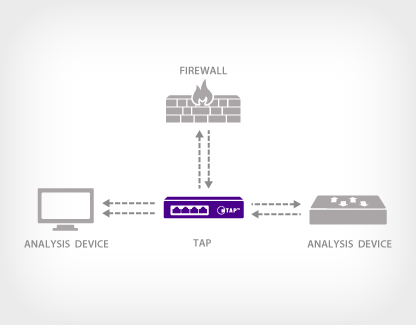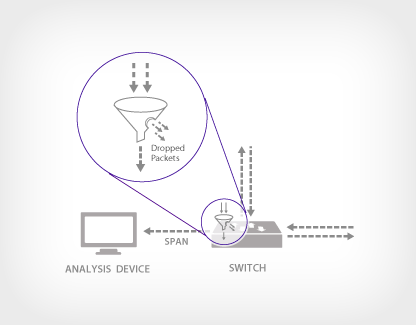TAPA TAP (Test Access Point) is a passive splitting mechanism installed between a ‘device of interest’ and the network. TAPs transmit both the send and receive data streams simultaneously on separate dedicated channels, ensuring all data arrives at the monitoring device in real time. |
vs |
SPANMost enterprise switches copy the activity of one or more ports through a Switch Port Analyzer (SPAN) port, also known as a mirror port. An analysis device can then be attached to the SPAN port to access network traffic. |
|
|
|
Pros
|
Pros
|
|
Cons
|
Cons
|
|
Bottom LineWhen deciding whether to use a TAP or SPAN the two primary factors that will affect your decision are the type of analysis and amount of bandwidth. A TAP is ideal when analysis requires seeing all the traffic, including physical-layer errors. A TAP is required if network utilization is moderate to heavy. An Aggregator TAP can be used as an effective compromise between a TAP and SPAN port, delivering some of the advantages of a TAP and none of the disadvantages of a SPAN port. *Refers to a full-duplex TAP, not an aggregator TAP. |
Bottom LineWhen deciding whether to use a TAP or SPAN the two primary factors that will affect your decision are the type of analysis and amount of bandwidth. A SPAN port performs well on low-utilized networks or when analysis is not affected by dropped packets. |

